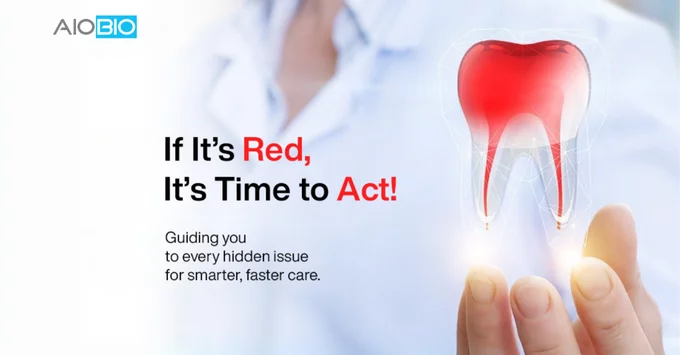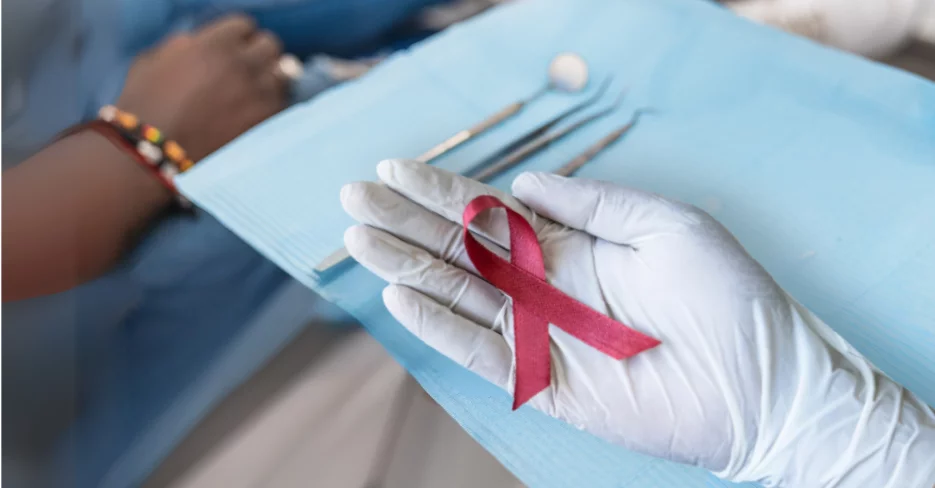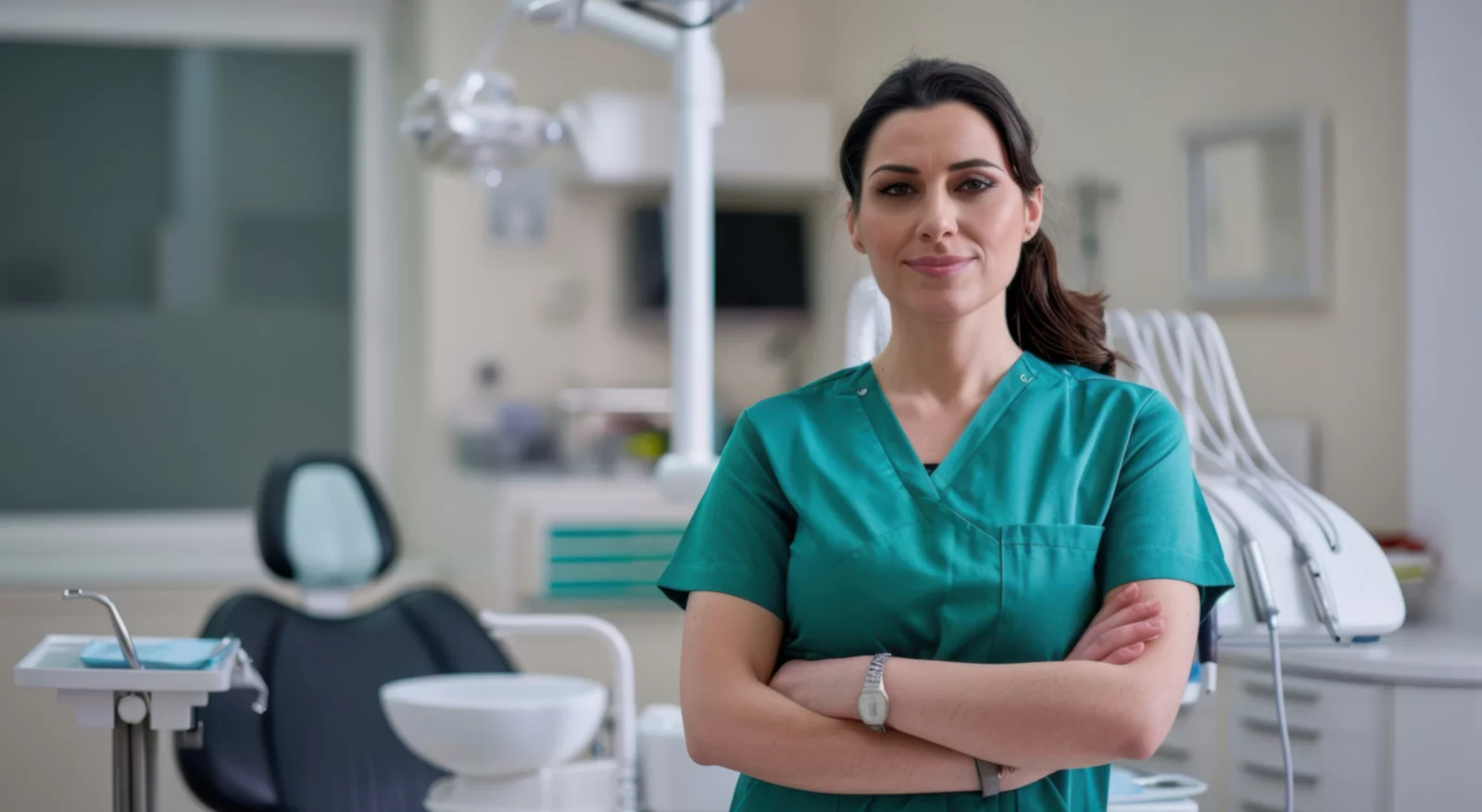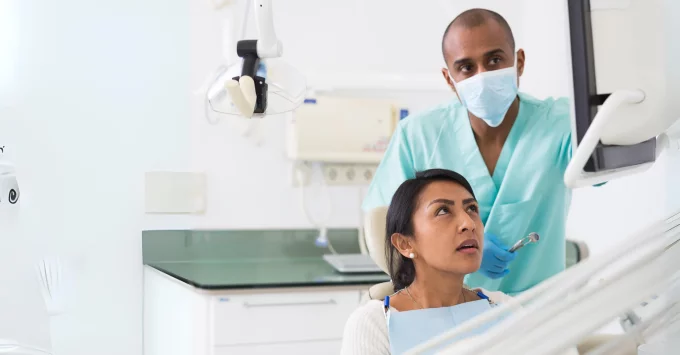By Han-Na Jang, RDH, MSDH
June 12, 2025
Bridging the Gap Between Dental Hygiene Education and Patient Understanding
As a dental hygienist and educator, I’ve spent years teaching students how to assess oral health, educate patients, and provide preventive care. Yet, one of the biggest challenges I faced—both as a clinician and an educator—was helping patients truly understand their oral health conditions.
Patients often assume their teeth are in good condition simply because they brush regularly and have no pain. They may not realize that early-stage biofilm accumulation, demineralization, and caries are invisible to the naked eye. Despite our best efforts in explaining these conditions, the gap between what we tell patients and what they perceive remains a significant barrier to preventive care.
This challenge led me to explore BLISS™ (Biofluorescence-Led Intelligent Screening System) technology, an advanced diagnostic tool that makes invisible biofilm, early caries, and cracks visible. My journey with BLISS technology has reshaped the way I educate both students and patients, and it has the potential to transform dental hygiene practice across the U.S.
My First Encounter with BLISS Technology: A Lesson in Clinical Education
When I first introduced BLISS technology to my dental hygiene students, I didn’t anticipate just how impactful it would be in real-time diagnostics. As part of a hands-on training session, students practiced using BLISS on each other to familiarize themselves with its applications. During this exercise, one student hesitated before volunteering for an image. She shared, “I have a resin filling that sometimes feels uncomfortable. I think something might be wrong, but I’ve been too afraid to do anything about it.”
Upon visual inspection, her filling appeared normal—just a standard white composite with no obvious issues. However, when we used BLISS technology, we saw a large red fluorescence beneath the filling, indicating bacterial activity or possible secondary decay.
The students’ eyes widened in shock. “I need to go to the dentist and get this checked right away!” she said. The entire class realized at that moment how powerful BLISS can be—not only for detecting issues early, but also for giving patients the confidence to act on their oral health.
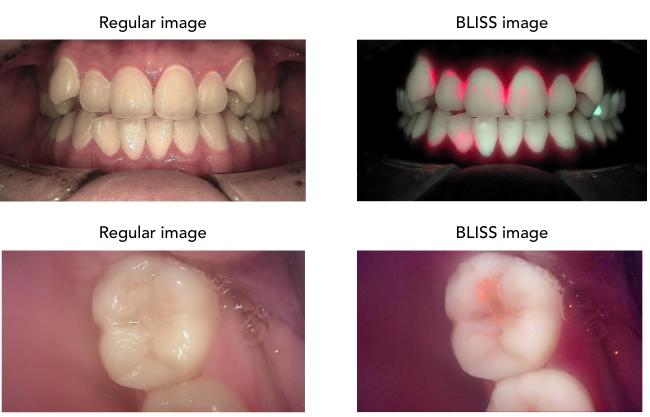
Clinical images captured using BLISS technology, courtesy of Dr. Hong Cheol Yoon.
This experience reinforced my understanding that BLISS technology is not just a diagnostic tool; it is an educational breakthrough that bridges the gap between what we see clinically and what truly lies beneath the surface.
Why BLISS Technology is a Must-Have for Dental Hygienists
As dental hygienists, we spend a significant amount of time educating patients about oral hygiene, but words alone are not always effective. BLISS technology changes the conversation in several ways:
- Patients Believe What They See Instead of simply telling patients they have plaque buildup; BLISS technology visually highlights problematic areas in red fluorescence. When patients see bacterial activity, they are far more likely to take action.
- It Encourages Preventive Action BLISS detects biofilm accumulation and early-stage demineralization, allowing patients to address issues before they progress to cavities or periodontal disease.
- It Increases Case Acceptance for Treatment Patients who can visualize their oral health condition are more likely to agree to scaling and root planning, fluoride treatments, and improved homecare routines.
- It Strengthens Patient-Provider Trust By providing real, objective evidence, BLISS technology fosters a sense of transparency and credibility in patient discussions.
- It Enhances Dental Hygiene Education Incorporating BLISS technology into dental hygiene curricula equips students with modern skills and prepares them for a technology-driven clinical environment.
Scientific Support for BLISS Technology in Dental Hygiene
Research supports the effectiveness of BLISS technology in detecting early caries, assessing oral biofilm, and diagnosing cracked teeth:
- Detection of Dental Caries in Primary Teeth: A study found that BLISS technology using Quantitative Light-Induced Fluorescence (QLF) demonstrates high diagnostic efficacy in detecting caries in primary teeth, making it a valuable tool in pediatric dentistry.1
- Biofilm Detection in Geriatric Patients: Research conducted on hospitalized geriatric patients showed that BLISS technology effectively detects oral biofilm, highlighting its role in preventive care and oral hygiene monitoring in high-risk populations.2
- Clinical Diagnosis of Cracked Teeth: A study evaluating the clinical efficacy of BLISS technology found that it successfully identifies cracks in teeth that might be missed by conventional examination methods, aiding in early diagnosis and treatment.3
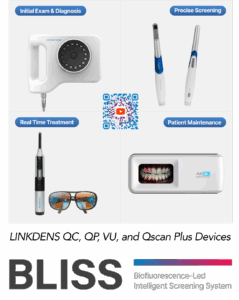
By incorporating BLISS technology into clinical settings, dental hygienists can take a proactive approach to patient education and preventive care.
Implementing BLISS Technology in Dental Hygiene Practice
If you’re considering integrating BLISS technology into your practice, here are a few practical steps:
- Use BLISS technology During New Patient and Revisit Appointments
- Capture baseline fluorescence images.
- Compare initial images with future captures to track biofilm control and caries progression
- Incorporate BLISS technology into Patient Consultations
- Show patients their fluorescence images alongside traditional intraoral photos.
- Use visual evidence to reinforce recommendations for homecare improvements and treatment acceptance.
- Educate Dental Hygiene Students on BLISS Technology
- Introducing BLISS technology during clinical training to help students understand real-time caries detection and biofilm analysis.
- Teach students how to effectively communicate BLISS technology findings to patients.
Why BLISS Technology is the Future of Dental Hygiene
Technology is rapidly transforming dentistry, and dental hygienists must be at the forefront of this evolution. BLISS technology offers an opportunity to enhance patient communication, improve preventive care outcomes, strengthen our role in patient education, and advance dental hygiene education and training. If you’ve ever felt frustrated that patients don’t fully understand their oral health risks, BLISS technology provides a breakthrough solution. So, the next time a patient tells you, “I think my teeth are fine,” don’t just tell them otherwise—show them.
Watch this brief video to see how BLISS technology empowers dental hygienists in both private practice and public health settings by enhancing patient communication and clinical assessment.
Explore additional case studies and related articles on how BLISS technology is being applied in clinical settings here.
Disclosure
The author, Han Na Jang, RDH, MSDH is a consultant for AIOBIO, a company specializing in Biofluorescence-Led Intelligent Screening System (BLISS™) technology. The views expressed in this article are based on professional experience and do not constitute a direct product endorsement.
____________________________________
References
1Kyung Hyun Cho, et al., “The Diagnostic Efficacy of Quantitative Light-Induced Fluorescence in Detection of Dental Caries of Primary Teeth,” Journal of Dentistry 115 (December 2021): 103845, https://doi.org/10.1016/j.jdent.2021.103845.
2Sol Park, et al., “Optical Detection of Oral Biofilm in Hospitalized Geriatric Patients Using Quantitative Light-Induced Fluorescence Technology,” Photodiagnosis and Photodynamic Therapy 39 (September 2022): 102962, https://doi.org/10.1016/j.pdpdt.2022.102962.
3Jong-In Lee, et al., “Evaluation of the Clinical Efficacy of Quantitative Light-Induced Fluorescence Technology in Diagnosing Cracked Teeth,” Photodiagnosis and Photodynamic Therapy 41 (March 2023): 103299, https://doi.org/10.1016/j.pdpdt.2023.1032992.
____________________________________
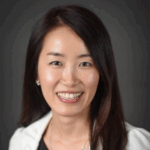 Han-Na Jang, RDH, MSDH is a clinician, author, entrepreneur, educator, and consultant. She is the CEO of DENTILINGUAL, an online dental English course designed for Korean dental professionals. Han-Na is passionate about advancing dental communication and education through innovative technologies. She can be reached at [email protected].
Han-Na Jang, RDH, MSDH is a clinician, author, entrepreneur, educator, and consultant. She is the CEO of DENTILINGUAL, an online dental English course designed for Korean dental professionals. Han-Na is passionate about advancing dental communication and education through innovative technologies. She can be reached at [email protected].
